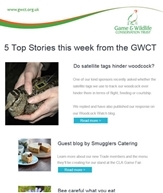 By Chris Stoate, Allerton Project Head of Research
By Chris Stoate, Allerton Project Head of Research
It's the time of year when we bring bits of tree into the house and send each other pictures of robins. Robins have featured on Christmas cards since Victorian times and have become as integrated into our mid-winter festivities as holly and mistletoe.
Even the technological advances of recent decades have not totally eclipsed our long evolutionary psychological integration with nature.
Robins are one of our most widespread and abundant species, occuring in woodland, on farms, and in urban gardens. As a confiding and adaptable bird, the robin is a species which is much loved by a large proportion of people. This is a species which has a strong cultural value.
Robins have fared well at Loddington. Breeding numbers doubled between 1992 and 2001 during which time we carried out a combination of habitat improvement, legal predator control and winter feeding. Numbers were 24% lower in 2006 in the absence of predator control. In this, robins follow the trend set by species such as blackbird and spotted flycatcher whose nesting success and breeding numbers are influenced by the control of nest predators.

Robin numbers were 56% lower in 2010 in the absence of winter feeding as well as predator control. Robins are regular visitors to garden bird tables, and have also frequently been recorded using gamebird feed hoppers on the farm at Loddington.
Our Trailcam records even document robins feeding from hoppers at night. Those big eyes which are no doubt part of the robin's popular appeal, are put to good use. With predator control and winter feeding restored at Loddington in recent years, robin numbers are now at their highest level since 1992.
This sort of conservation management system has a cost, and this is met by a combination of private funding and government payments through initiatives such as the Countryside Stewardship scheme. At times of political and economic uncertainty, searching questions are inevitably asked about expenditure at all levels, from government to individual farms and households. The moral imperative for wildlife conservation aside, the case for public and private investment in wildlife is strong.
Each Christmas we demonstrate the cultural value we attach to robins, but the importance of this species, and countless others, extends much further. The evidence for important benefits of wildife to human psychological wellbeing continues to mount.
Wildlife can reduce stress and anxiety, and increase positive mood, self-esteem and resilience, helping to reduce mental health problems which are an enormous and persistent social and economic national burden. The robin is a seasonal reminder that, at times of political and economic uncertainty, arguably above all others, our wildlife is an asset which we need to recognise and support for our mutual benefit.
 Free weekly newsletter
Free weekly newsletter
Stay updated and get all the latest GWCT blog updates and news delivered straight to your inbox each week.
Sign up FREE to the Weekly GWCT Newsletter >